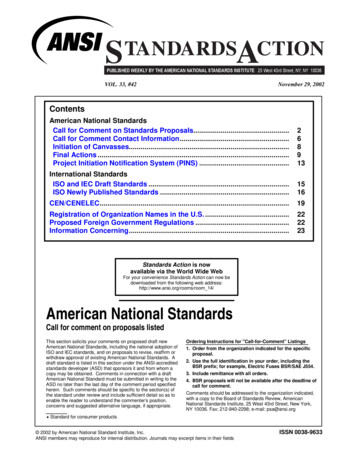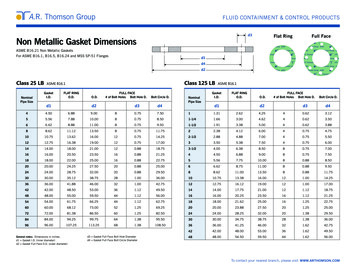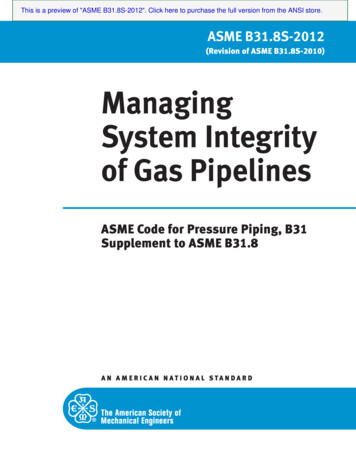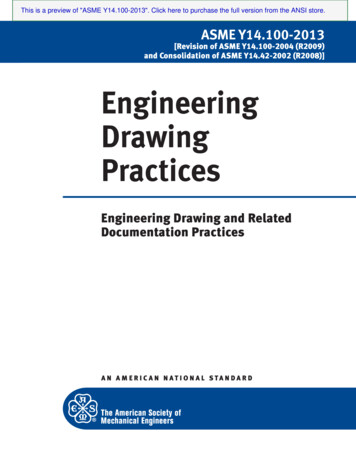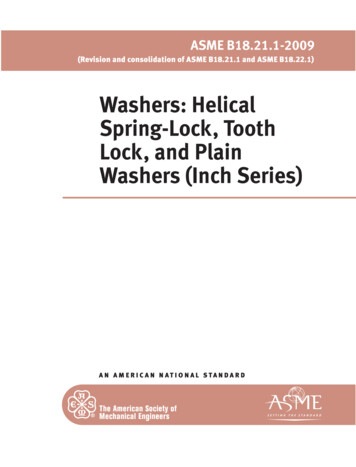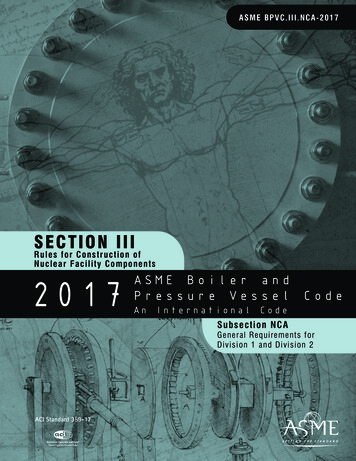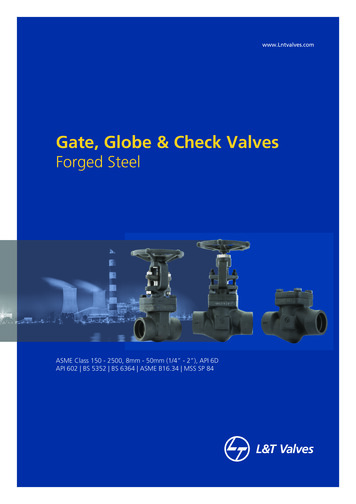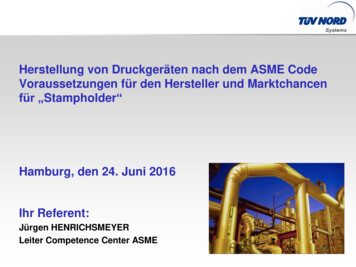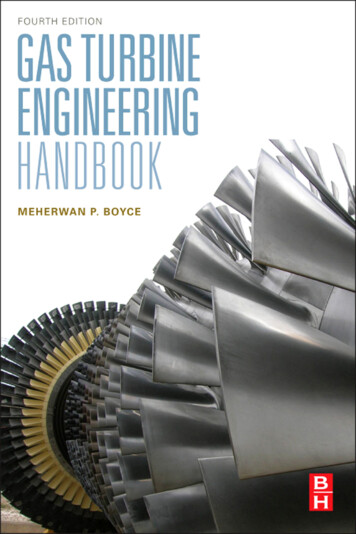
Transcription
Use and misuse of ASME CODE CASE 2235-9ForewordSome years ago Asme Code has introduced the possibility to substitute the Radiography by MechanizedUltrasonic Inspection of welds from the minimum thickness of 13 mm and on.The fact that the possibility is still limited in a Code Case, apart from Section VIII Div. II were is now coveredunder chapter 7, gives the idea that the problem is still under careful examination.Too often the document is interpreted by the Inspection Agencies or clients with original approach, causing lotof problems to the Manufacturer of pressure vessels that do not find a well defined position in the code that canhelp to interpret the document.Present paper takes into consideration some applications were many Manufacturers after a period of enthusiasmfor the possibility to get rid of Radiation with all the annexed problems, having the possibility to give morecomplete information on the results of an inspection, using the most recent equipment available, are nowconsidering to come back to the old Radiography.Some points that give raise to more frequent dispute are here reported; for easy presentation the original text isreported and some comments are associated for consideration and possible discussion from the audience.The conclusion is that it is easier to discuss and to obtain the approval of the Radiography system even if theresults obtainable with ultrasonics are more complete and precise.The situationIn principle the Code Case states that UT is accepted in lieu of radiography starting from thicknesses of 13 mmand over, provided that (only the most important items for our scope are reported here, toghether with shortcomments):No Comment
N. C.N. C.N. C.In this case the thickness of defect need not to be measured?What about the position?In case of Tofd technique what to do for defects close tosurface? This apply also for C-B scan and phased array.
N. C.N. C.N. C.(1)(a) manually? But without unprocessed recordable way(1)(b)again see (1)(a) above valid for all (1),(2),(3)
Difficult to interpret, come back to radiography?Difficult to evaluate and not automatically recorded inunprocessed way
The three NDT systems considered do not detect the depth of adefect with the precision requestedN. C.
N. C.N. C.Elements for considerationOn the basis of the above simple considerations it appears that, after long time, the problem of accepting UT inLieu of RT is still in a discussion stage and that the acceptance of any system is still depending from theCompany requesting the inspection and from the mood of the Inspector or Third Party Agency Representative.The demonstration of satisfactory performance is very difficult, when inspecting pipes of large thicknesses(more than 50 mm) and small diameters, particularly in Pipe-to Flange or Pipe to Elbow connections.In some cases Inspectors from well known Companies have requested the validation of the system by means ofblind tests performed on samples specifically prepared to verify the detection of artificial reflectors that fortheir nature and position would not normally be encountered in practice.In other cases a modelling of scan plan prepared to detect, in the most unfavorable condition, the maximumdefect to be found, were preliminary evaluated in terms of probability of detection by software, obtaining evendifferent results from the ones used from two different Inspection Agencies.The conclusion is that more and more Constructors prefer to come back to RT inspection for big thicknessesbecause what can be seen is often very poor and do not give raise to endless dispute.
Use and misuse of ASME CODE CASE 2235-9 Foreword Some years ago Asme Code has introduced the possibility to substitute the Radiography by Mechanized Ultrasonic Inspection of welds from the minimum thickness of 13 mm and on. The fact that the possibility is still limited in a Code Case, apart from
